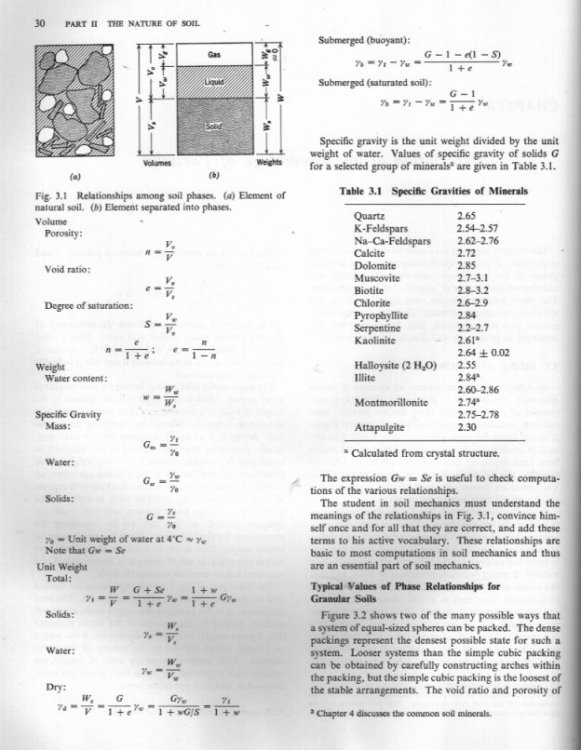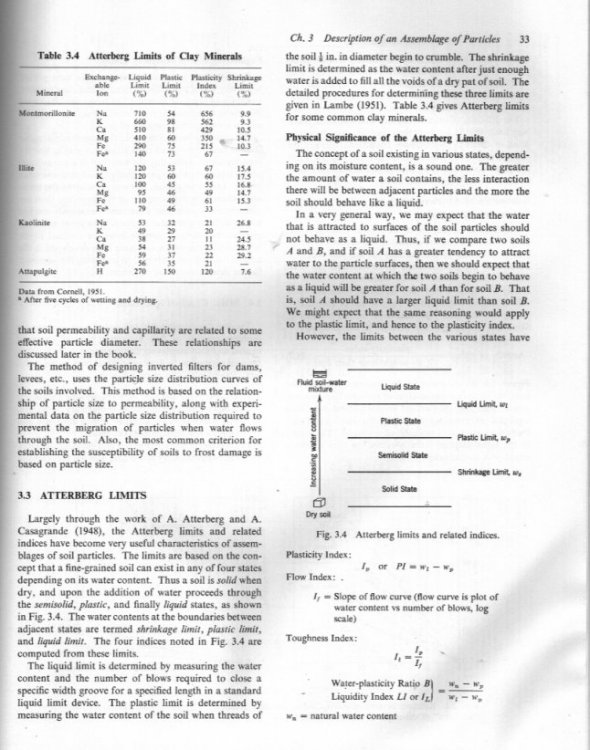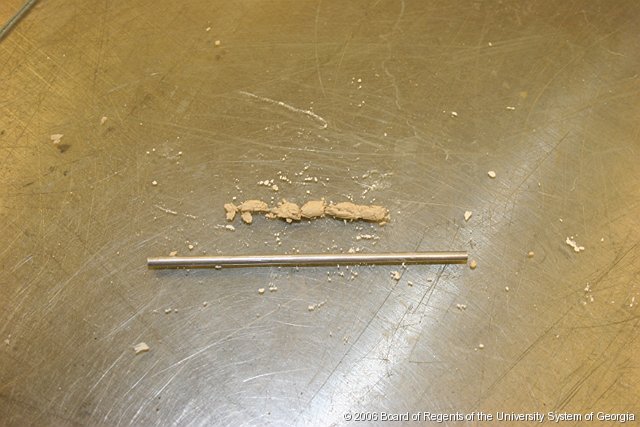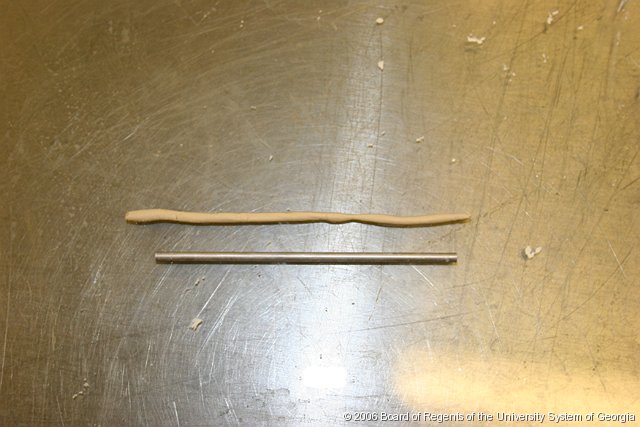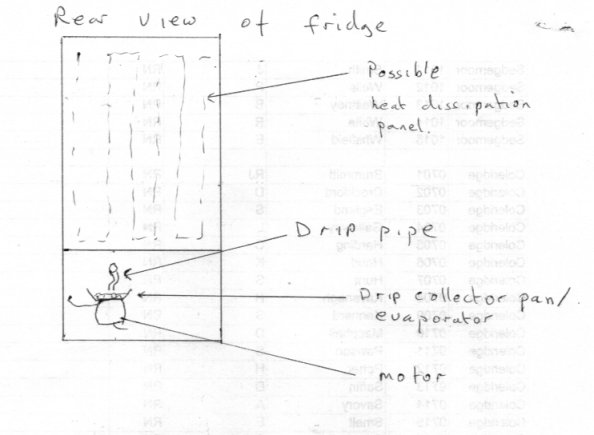Leaderboard
Popular Content
Showing content with the highest reputation on 04/07/21 in all areas
-
I would like to defer discussion of hydrogen bonding to another thread as it is taking us further and further off topic. The weakest standard bond my copy of Lange's Chemistry Handbook lists is the lithium - Lithium bond at 11 kcal/mol and the strongest hydrogen bond this modern article lists is the formic acid - flouride ion one at 48 kcal/mol (on page 22) https://www.tdx.cat/bitstream/handle/10803/7945/tdhg.pdf?sequence=3Girona But the important point I wanted to make was not the strength if the individual bond but the collective strength of many bonds applied to large molecular aggregates. Yes, most Science texts are expensive, especially working ones. To continue with the mechanical aspect here is some data to review. Don't worry about the forumale, just look at the daigrams and the text and get an idea of how any soil material is made up and behaves as it does mechanically. This will help enormously when we look particularly at clays. I have mentioned the Atterberg limits, but you did not answer my question or the one about vitrification so here are a couple of photos of how geologists and soils engineers test soild for plasticity. I'm sorry I don't have any more time tonight but will come back to it. So here is a website that explains clay from potter's viewpoint , including the subject of my other question - vitrification. https://thepotterywheel.com/types-of-clay-for-pottery/1 point
-
the matter/antimatter asymmetry is the issue of why we have matter and not antimatter around. The amounts are not equal, or symmetric g-2 refers to the muon magnetic moment experiment, in the nature link I added to my previous post I come from atomic physics, which gave us "optical molasses" and "Bose-nova" (both, I think, from the Wieman and/or Cornell research groups) so don't look to me for help.1 point
-
So they say scientists don't know what the force is, exactly, but imply it will explain dark matter, these muon issues, matter/antimatter asymmetry, etc. Also, they imply this is a revelation, when we know the standard model is incomplete. I saw on twitter where it was stated the g-2 results from today used the same storage ring design as the previous results (which showed a similar disagreement with the standard model), meaning you can't rule out some systematic errors. edit: the calculations that incorporate better QCD values narrows the discrepancy between theory and experiment https://www.nature.com/articles/d41586-021-00898-z1 point
-
There is an informative, though very long, article here about the physics of organ pipes that may be relevant: https://www.academia.edu/24411933/The_Physics_of_Organ_Pipes Buried in this is a bit about the effect of width of the pipe. It seems that a wide pipe is effective at resonating for the lower harmonics only, while a narrower one allows higher harmonics to resonate more and thus sounds brighter. So yes, a softer or mellower tone will be produced by a wider bore, but it may sound rather dull.1 point
-
1 point
-
Yes I don't think there are many fridges or freezers on the market without this system +1 You got there before me, but I'll just add my diagram anyway, which shows the back of the device. Most of these have the drip collection and evaporation tray mounted directly on top of the motor to use the small amount of heat the motor generates. The drip tube coming out of the cold compartment is a frequent source of blockage and water collecting inside the device. But the important point here is the word evaporation. I already mentioned that water vapour is invisible in connection with the microwave, which also gives off water vapour despite the Tiitus' protestations to the contrary. Not only this but with typical vapour generation rates for both devices, the vapour will be warm not hot so near impossible to detect by touch. So it is quite reasonable to think that the evaporating water vapour from not only these devices but the rest of the kitchen activities of cooking and washing will disperse and finally condense on that large cold slab formed by the exposed masonry arch. I note from the pictures that there appears to be some scour on the black coating on that region. I also take it that Titus did not blacken the arch at the original refitting, so it was quite possible that an older bodge was concealed under a more complete black coating at that time. If that is the case then no 'cavity rubble' would have been evident at the time of the first refit. Condensation deterioration inside old chimney stacks that have not been used (ie heated) for a long time is a well known phenomenon. The masonry not only provides a massive cold sink but also often as moisture absorbant one to boot. As regards gas televisions, back when the UK converted to natural gas, my brother was heavily involved and had an interesting isuue to resolve. British Gas at the time was legally bound to convert all existing gas devices free of charge. There were some gas powered radios (not televisions as I recall) in the remote North of Scotland that therefore had to be converted. This caused much head scratching at the time.1 point
-
Most of the (electric) fridges I've seen have a water drain to remove condensation from the cold panel (evaporator). This is typically connected to an exterior evaporating trough at the back, warmed by the heat exchanger (condenser) that rejects the heat. It's not a lot of moisture, obviously, but there is a little. And there is certainly warmth. Perhaps it could be primarily an effect of warmth, combined with the natural damp in the walls, or something. P.S. On the subject of gas fridges, I remember someone's girlfriend being conned into thinking that, for caravans, one could have a gas television.😊1 point
-
Could possibly end up something like Venus too. With a day length about 117 times ours, it still maintains about the same temperature planet wide. I was thinking most of the ecology could be airborne, with low lying or anchored surface and underground species providing mineral resources.1 point
-
I will never understand this need people have, to 'label' other people. We label them according to perceived aptitudes; those with athletic aptitude are 'jocks', those with technical aptitude are 'nerds'. We label them accordng to the government they need; 'liberals' need a government that takes care of people, 'conservatives' want a government that gets out of their way. We label them according to their roles in society; 'enablers' allow bad stuff to happen, 'complainers' bitch about bad stuff happening. We label them according to their station in life; successful people are seen as 'capitalists', people in need of social assistance are 'socialists'. Most people are not so dogmatic in their personal self-assessments, and realize tht they fit in a 'spectrum' ( that word is becoming overused ) between the extremes, yet on assessing others we often see, and 'label' them, with the extreme. I have always loved 'tinkering' with electronics/machinery, and some have called me a 'nerd'. At one time I could disassemble a laptop, and solder/desolder on its motherboard, or disassemble an auto transmission, then my vision went bad, and such things have become very difficult, so I'm no lnger a nerd. I started working out with weights, and joined a gym, in 1976, and it became a big part of my life, so much so, that girls used to accuse me of spending too much time in the gym; but I'm 61 now and no longer that dedicated so I guess I'm not a 'jock' anymore either.1 point
-
Nature of true original science is NOT hasty. they just needed some vaccine to soothe the populace. Not exactly clear how successful this shall turn out to be. Let alone in other less attractive , less "important" fields . . . .. .-2 points





